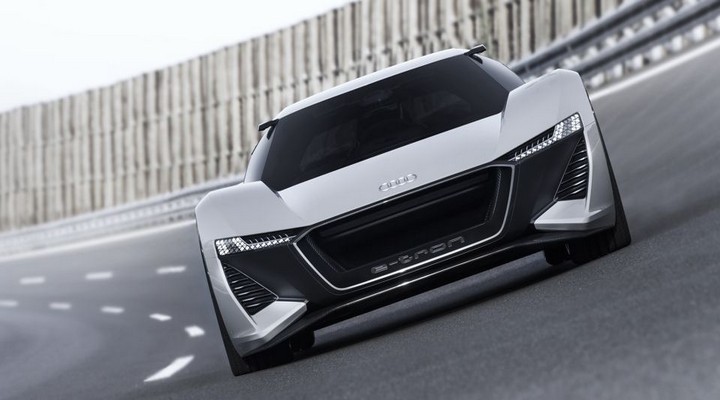We were barely breaking in our teens when we were introduced to the Spy Kids franchise. The cool, futuristic setting of the movies was only complemented by the fast and furious vehicles in the movie. Perhaps taking inspiration from them or out of sheer automotive genius, German automobile manufacturer Audi has created the AI: RACE.
First introduced in 2018, the car is a symbol of futuristic technology, as it supports wireless charging that can juice up the battery in just 15 minutes! It is expected to be offered with a solid-state 95kWh capacity battery that will give the AI: RACE a range of 500 kilometres. It also offers a segment-first transforming cockpit.
No, the car does not transform into a talking robot, unfortunately. However, the cockpit can be adjusted to suit the racetrack or the road. This is possible as the driver’s seat and the cockpit are integrated into an inner monocoque shell that can be slid laterally. This allows the driver to position the steering wheel in the centre of the car- a perfect setup for the racetrack. Naturally, the pedals can be shifted as well, while all of this is made possible by the by-wire design that eliminates the need of a mechanical connection.
Gael Buzyn is Head of the Audi Design Loft in Malibu – where the Audi AI:RACE was born. He describes the most important item in the specifications: “We want to offer the driver an experience that is otherwise available only in a racing car like the Audi R18. That’s why we developed the interior around the ideal driver’s position in the center. Nevertheless, our aim was to also give the AI:RACE a high degree of everyday usability, not just for the driver, but also for a potential passenger.”
The AI:RACE is 4.53 meters long, 2 meters wide and just 1.15 meters tall (14.5 x 6.4 x 4.6 ft). These dimensions alone speak of a classical sports car. The wheelbase is 2.70 meters (8.9 ft) and the overhangs are compact. Wide and flat light units with integrated digital matrix technology and laser high-beam headlights complete the face of the AI:RACE.
Powering the futuristic concept are three electric motors – one in the front and two at the back. Audi, sticking to its quattro roots, divides the output of the AI: RACE accordingly. Though the maximum power output stands at 500kW, the driver can temporarily churn out an additional 70kW with boosting. The AI: RACE makes a combined peak torque of 830Nm, that propels the car from a standstill to 100kmph in barely more than 2 seconds.
As mentioned earlier, the AI: RACE supports wireless charging and is designed to charge with 800 volts. The Audi Wireless Charging (AWC) works by placing a charging pad with integral coil on the floor where the car is to be parked, and connecting it to the power supply. The alternating magnetic field induces an alternating voltage in the secondary coil fitted in the floor of the car, across the air gap.
The German luxury carmaker will be manufacturing the AI: RACE in a limited production run. There are 50 units expected to be produced in total and will be sold to exclusive customers.
